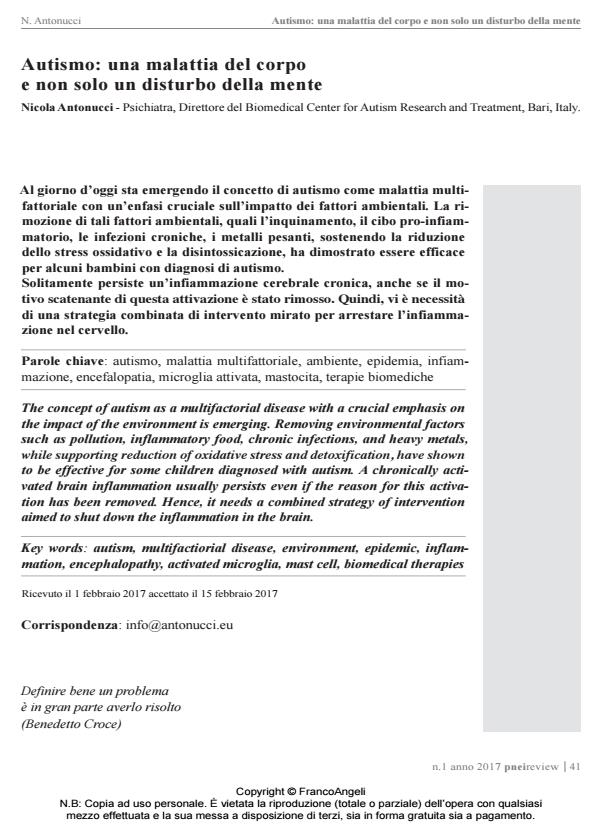Autism: a disease of the body and not only a disorder of the mind
Journal title PNEI REVIEW
Author/s Nicola Antonucci
Publishing Year 2017 Issue 2017/1
Language Italian Pages 6 P. 41-46 File size 1084 KB
DOI 10.3280/PNEI2017-001005
DOI is like a bar code for intellectual property: to have more infomation
click here
Below, you can see the article first page
If you want to buy this article in PDF format, you can do it, following the instructions to buy download credits

FrancoAngeli is member of Publishers International Linking Association, Inc (PILA), a not-for-profit association which run the CrossRef service enabling links to and from online scholarly content.
The concept of autism as a multifactorial disease with a crucial emphasis on the impact of the environment is emerging. Removing environmental factors such as pollution, inflammatory food, chronic infections, and heavy metals, while supporting reduction of oxidative stress and detoxification, have shown to be effective for some children diagnosed with autism. A chronically activated brain inflammation usually persists even if the reason for this activation has been removed. Hence, it needs a combined strategy of intervention aimed to shut down the inflammation in the brain.
Keywords: Autism, multifactiorial disease, environment, epidemic, inflammation, encephalopathy, activated microglia, mast cell, biomedical thera
Nicola Antonucci, Autismo: una malattia del corpo e non solo un disturbo della mente in "PNEI REVIEW" 1/2017, pp 41-46, DOI: 10.3280/PNEI2017-001005